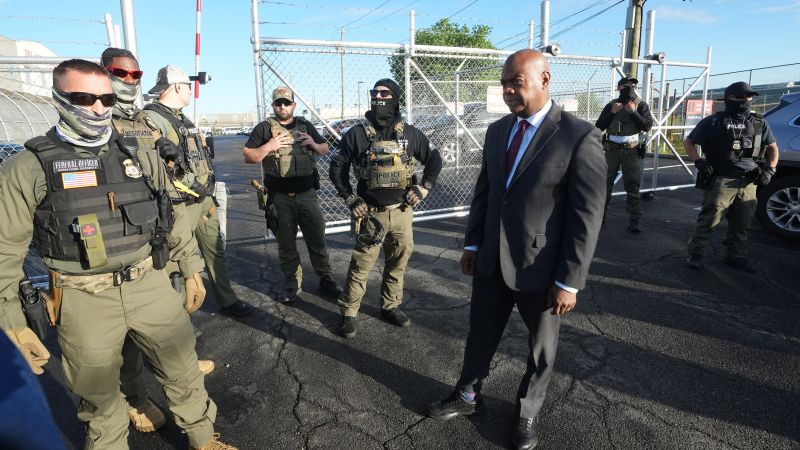The Department of Homeland Security (DHS) has recently implemented new guidelines requiring members of Congress to provide a 72-hour notice before visiting detention centers operated by Immigration and Customs Enforcement (ICE). This decision comes on the heels of several heated encounters between lawmakers and ICE officials. Although the annual appropriations act grants lawmakers the right to enter any DHS facilities used for the detention of migrants without prior notice, the DHS asserts that this revised policy is essential for operational security and overall safety.
Under the existing framework of the appropriations act, U.S. lawmakers have unimpeded access to DHS facilities specifically designed for housing individuals, typically referred to as “aliens” in formal contexts. This act emphasizes that lawmakers are not obligated to inform the DHS in advance of their intentions to inspect these facilities. Nevertheless, the new memo from DHS distinguishes between ICE field offices, which do not classify as detention centers, and traditional detention facilities themselves.
Rep. Bennie Thompson, a prominent Democrat from Mississippi who serves as the top-ranking member of the Homeland Security Committee, has criticized this recent move by the DHS as “unprecedented,” branding it an affront to both the Constitution and federal law. He expressed concern that the policies implemented by DHS are attempts to hinder the oversight responsibilities of Congress. Thompson argued that restricting visits to these offices represents a smokescreen aimed at obscuring the conditions faced by detainees, including not only migrants but sometimes U.S. citizens themselves.
This shift in policy marks a significant departure from previous stances by DHS, wherein the agency had committed to complying with the law and allowing Congress members to tour ICE detention facilities for oversight functions. The recently issued memo, however, implies a far more conditional approach, once again emphasizing the potential for operational or security challenges that might delay entries.
As tensions have escalated, particularly between Democratic lawmakers and law enforcement, some of these encounters have turned confrontational. Notably, Rep. LaMonica McIver faced federal charges for allegedly obstructing immigration officers outside a New Jersey detention center during a visit. During this incident, which also involved fellow Democratic representatives Robert Menendez Jr. and Bonnie Watson Coleman, police arrested Newark Mayor Ras Baraka after he attempted to intervene. Initial charges of trespassing against Baraka were later dismissed, but the situation reflects the rising friction between lawmakers and immigration enforcement.
In another instance, Democratic Senator Alex Padilla was forcibly removed from a press conference in Los Angeles while trying to ask Homeland Security Secretary Kristi Noem a question related to the administration’s handling of anti-ICE protests. This confrontation escalated quickly, with law enforcement detaining Padilla and physically restraining him as tensions heightened in the room.
Other lawmakers have similarly encountered harsh treatment while advocating for immigrant rights. For example, Brad Lander, New York City’s comptroller and an emerging candidate for mayor, was arrested at Manhattan’s immigration court during an attempt to safeguard a migrant from being taken into custody. This exchange showcased the chaotic and often volatile nature of protests occurring around immigration issues, with videos capturing moments of physical altercation and heightened emotional response.
The growing frustration among lawmakers over perceived restrictions on their oversight powers highlights the underlying tensions surrounding immigration policy and its enforcement. These encounters not only underline the contentious atmosphere surrounding immigration in the United States but also illustrate the broader struggle for accountability within federal agencies like ICE and the DHS.
As the discourse evolves, CNN has reached out to the DHS for comments and clarifications regarding the new visitation guidelines, which have quickly become a focal point for debate among stakeholders concerned with immigration policy and human rights. The rift between lawmakers and immigration enforcement agencies appears poised to continue, illustrating the ongoing complexities and challenges regarding immigration reform and agency oversight in the face of stringent enforcement measures.



